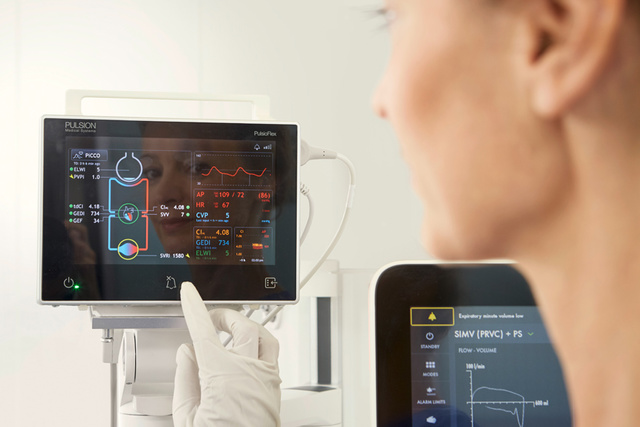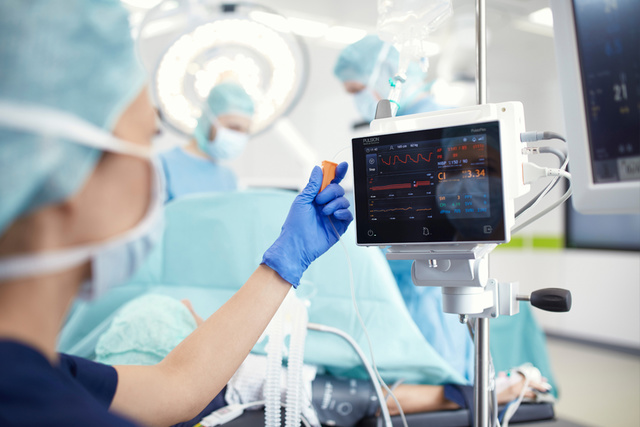-
1. Yamada T, Vacas S, Gricourt Y, Cannesson M
Improving Perioperative Outcomes Through Minimally Invasive and Non-invasive Hemodynamic Monitoring Techniques. 2018:Front. Med. 5:144.doi: 10.3389/fmed.2018.00144
-
2. Salzwedel C, et al.
Perioperative goal-directed hemodynamic therapy based on radial arterial pulse pressure variation and continuous cardiac index trending reduces postoperative complications after major abdominal surgery: a multi-center, prospective, randomized study. Crit Care 2013;17(5):R191.
-
3. Giglio M, Marucci M, Testini M, Brienza N.
Goal-directed haemodynamic therapy and gastrointestinal complications in major surgery: a meta-analysis of randomized controlled trials British Journal of Anaesthesia 103(5):637–46 (2009) doi:10.1093/bja/aep279
-
4. Cecconi M, Fasano N, Langiano N, Divella M, Costa M, Rhodes A, Rocca G.
Goal-directed haemodynamic therapy during elective total hip arthroplasty under regional anaesthesia. Critical Care 2011, 15:R132.
-
5. Michard F, et al.
Potential return on investment for implementation of perioperative goal-directed fluid therapy in major surgery: a nationwide database study. Perioper Med 2015;4(11).
-
6. Mythen MG, Swart M, Acheson N, et al.
Perioperative fluid management: consensus statement from the Enhanced Recovery partnership. Perioper Med. 2012, 1:2. doi: 10.1186/2047-0525-1-2
-
7. Benes J, Haidingerova L, Pouska J et al.
Fluid management guided by a continuous non-invasive arterial pressure device is associated with decreased postoperative morbidity after total knee and hip replacement. BMC nesthesiol. 2015;15(1).
-
8. Stenglova A, Benes J,
Continuous Non-Invasive Arterial Pressure Assessment during Surgery to Improve Outcome. Front Med (Lausanne). 2017 Nov 17;4:202
-
9. Salmasi V, Maheshwari K, Yang D, et al.
Relationship between Intraoperative Hypotension, Defined by Either Reduction from Baseline or Absolute Thresholds, and Acute Kidney and Myocardial Injury after Noncardiac Surgery: A Retrospective Cohort Analysis. Anesthesiology 2017;126(1):47-65. https://doi.org/10.1097/ALN.0000000000001432
-
10. Bijker J, Persoon S, Linda M. et al.
Intraoperative Hypotension and Perioperative Ischemic Stroke after General Surgery: A Nested Case-control Study. Anesthesiology 2012;116(3):658-664. https://doi.org/10.1097/ALN.0b013e3182472320
-
11. Bellamy MC.
Wet, dry or something else? Br J Anaesth. 2006;97(6):755-757. doi:10.1093/bja/ael290
-
12. Benes J, Giglio M, Brienza N, Michard F.
The effects of goal-directed fluid therapy based on dynamic parameters on post-surgical outcome: a meta-analysis of randomized Controlled trials. Critical Care. 2014;18(5).



